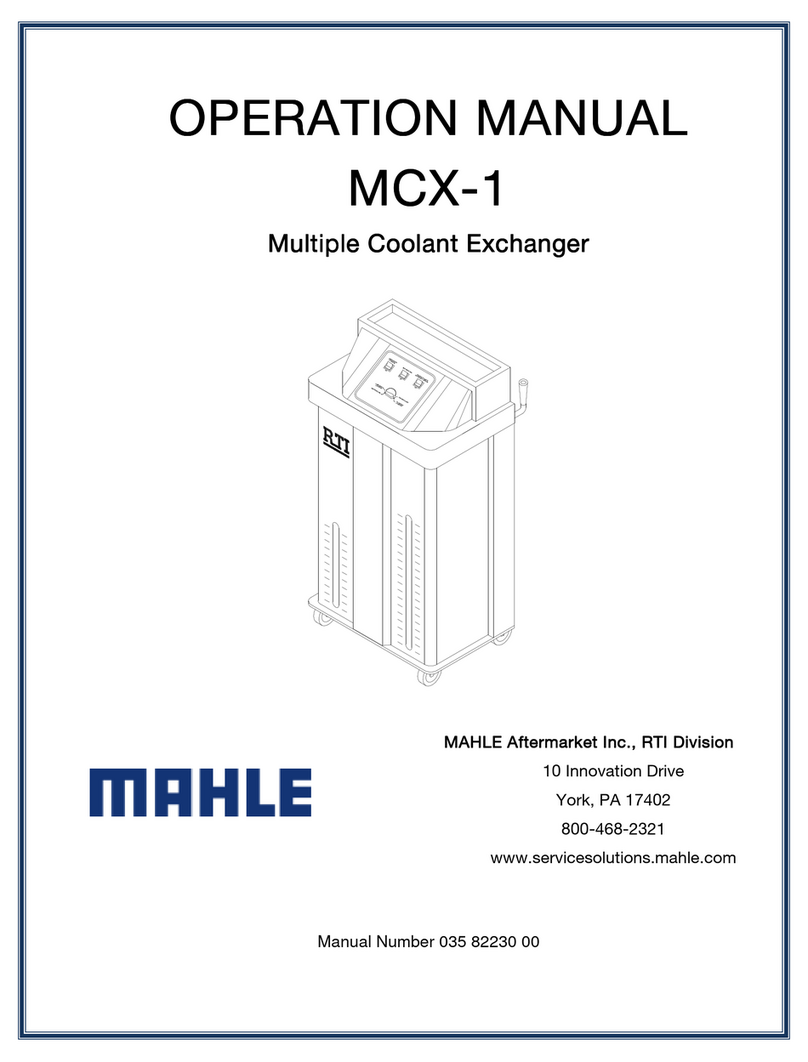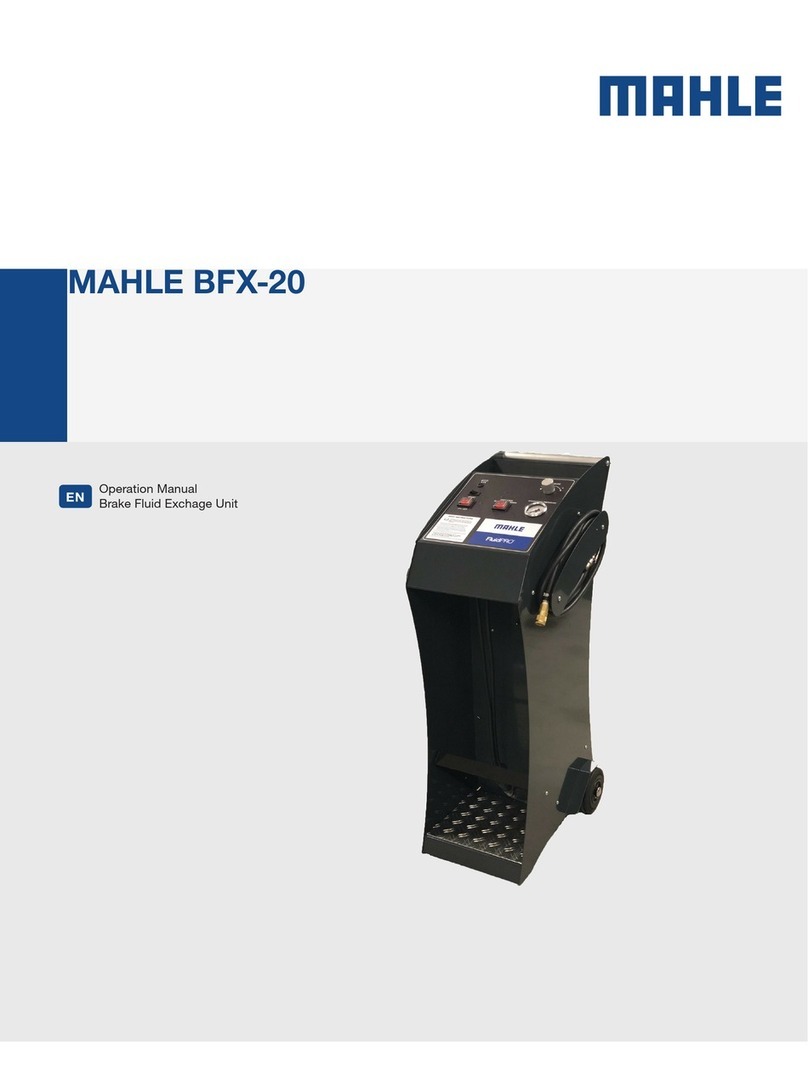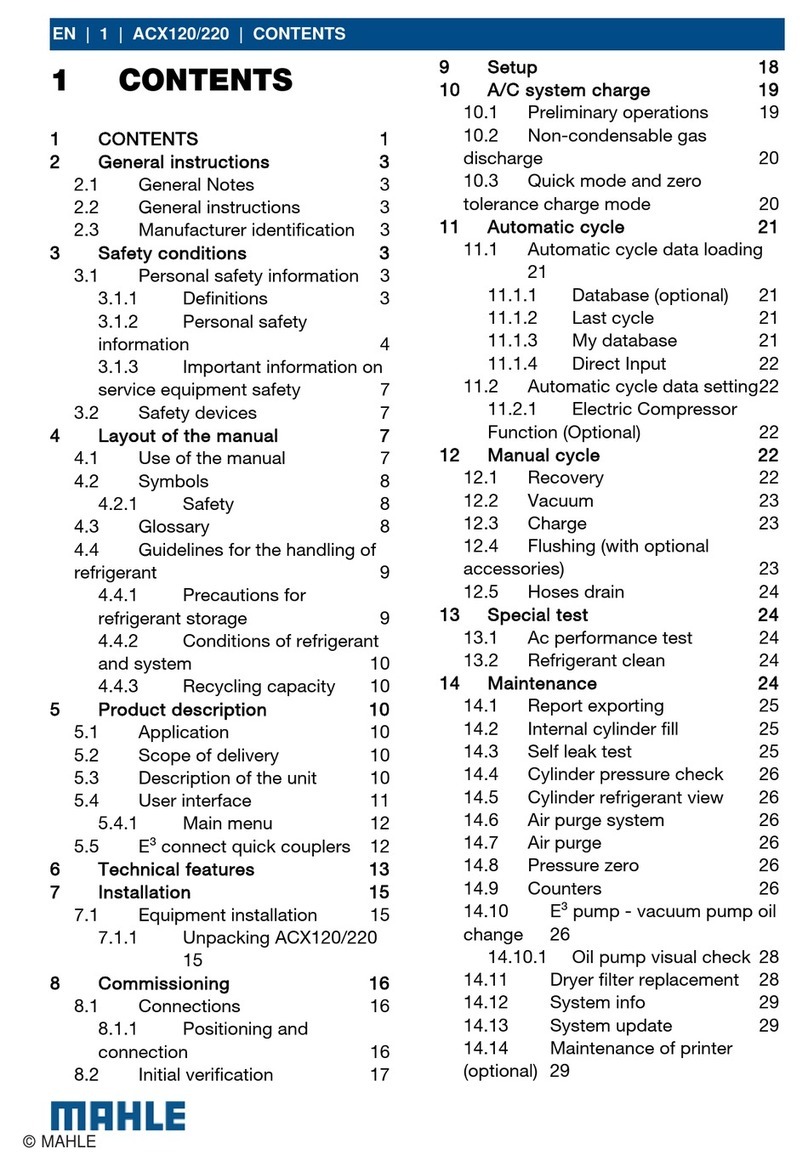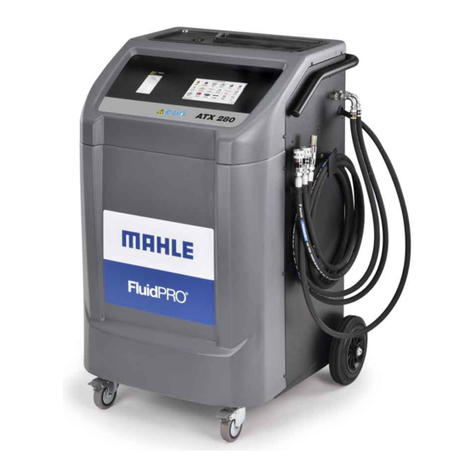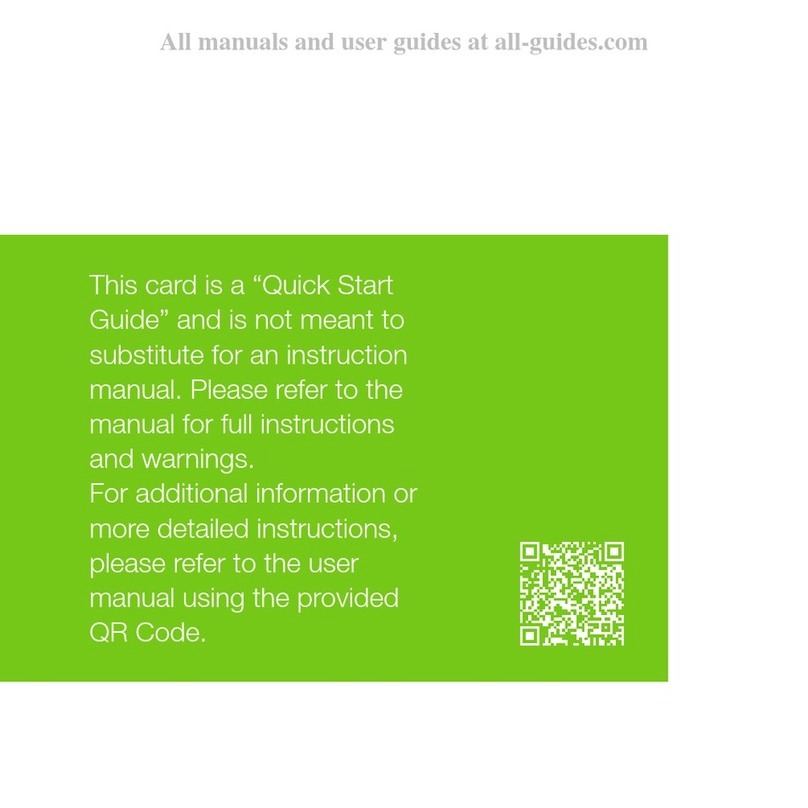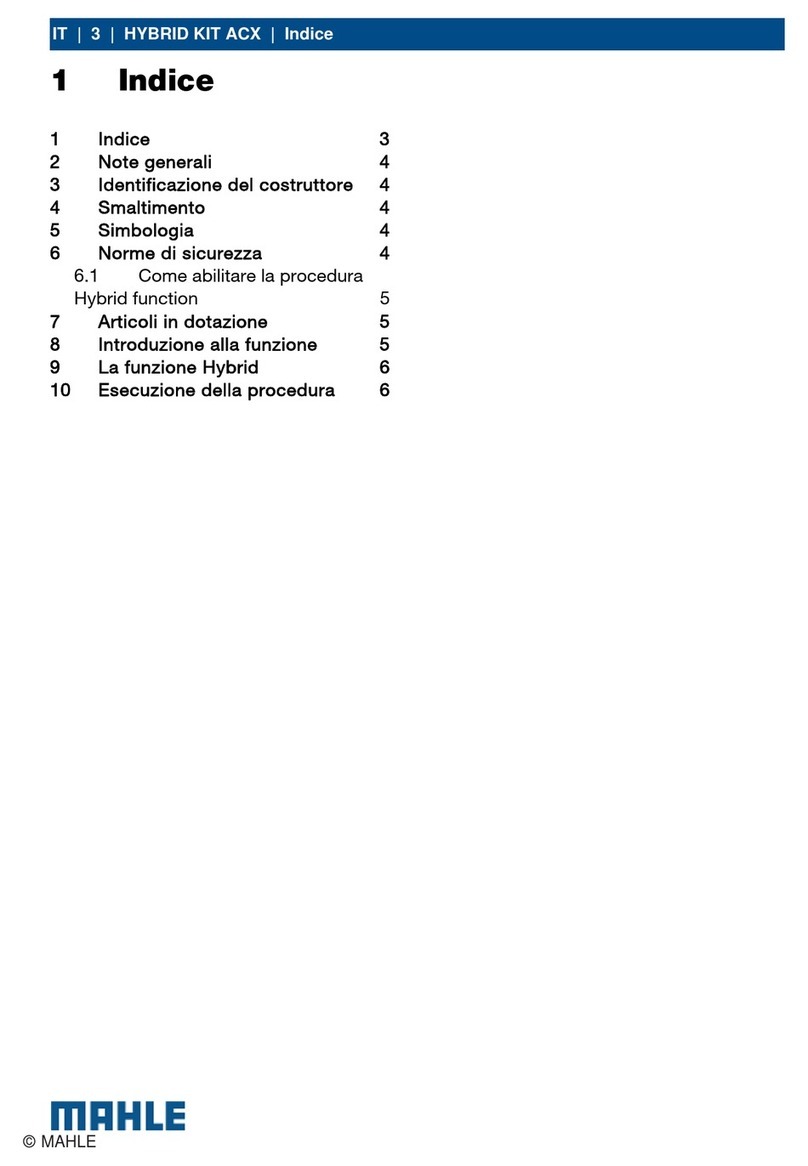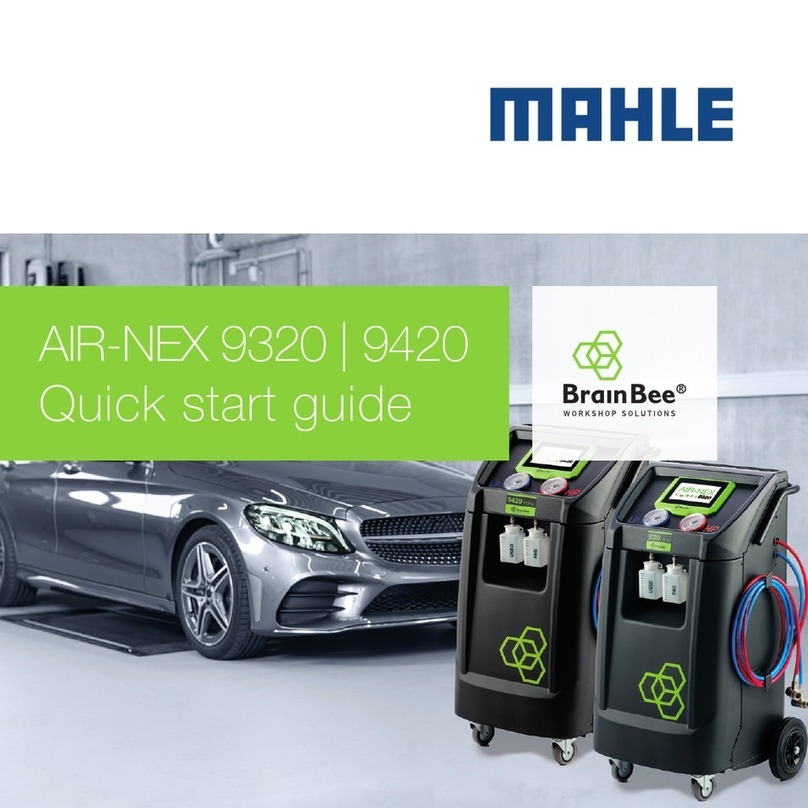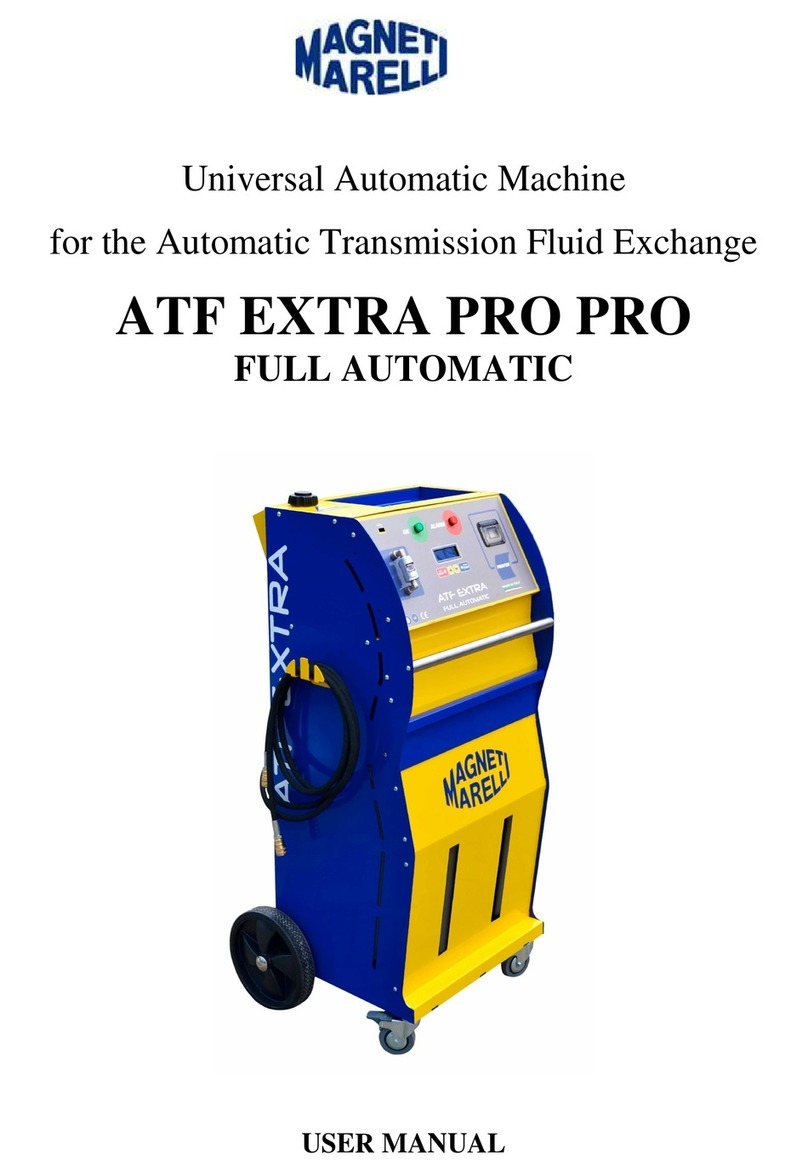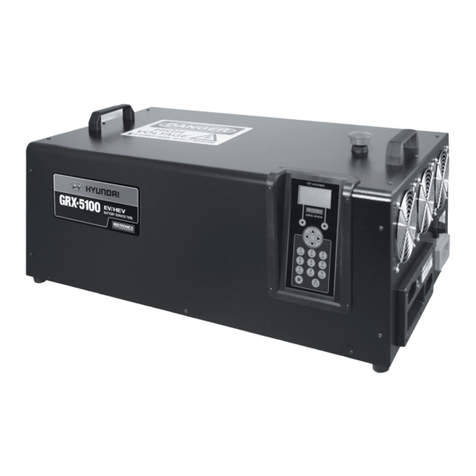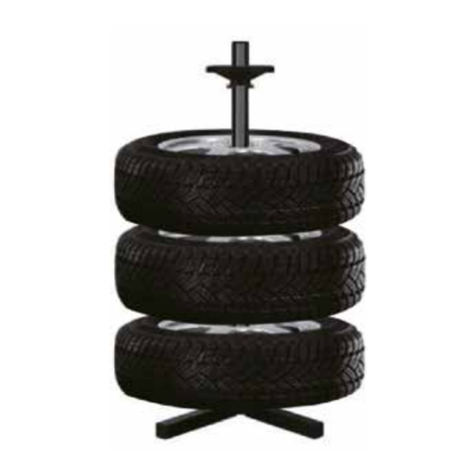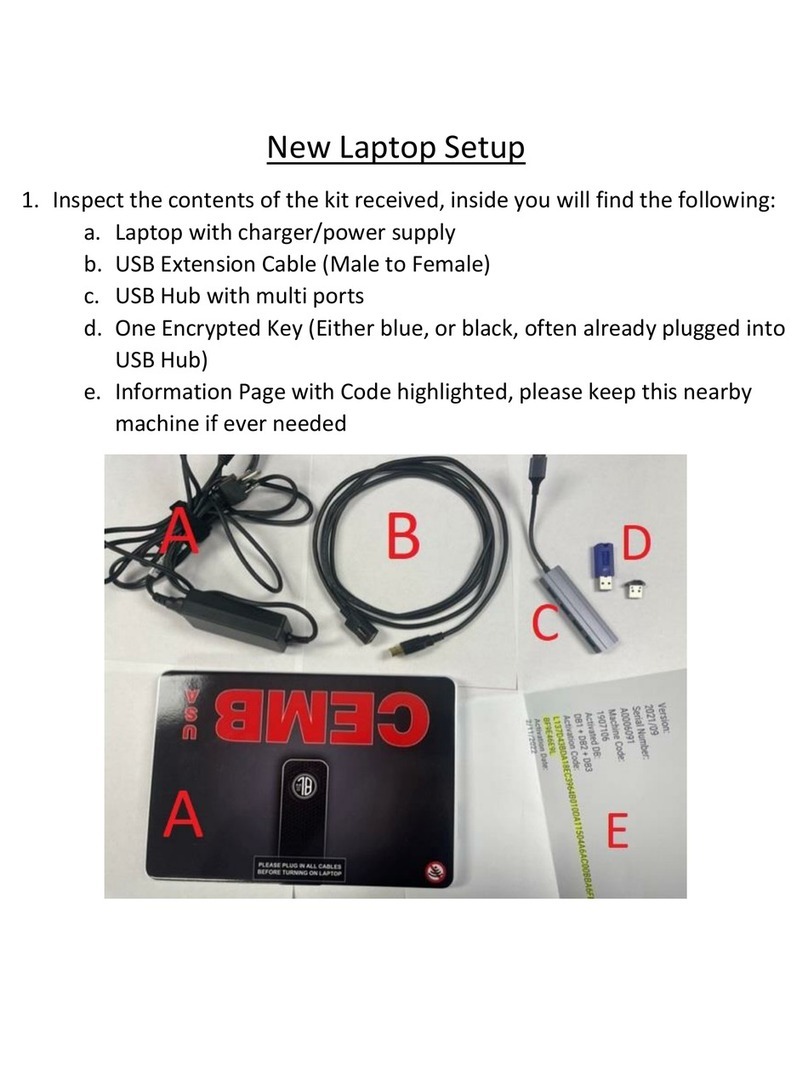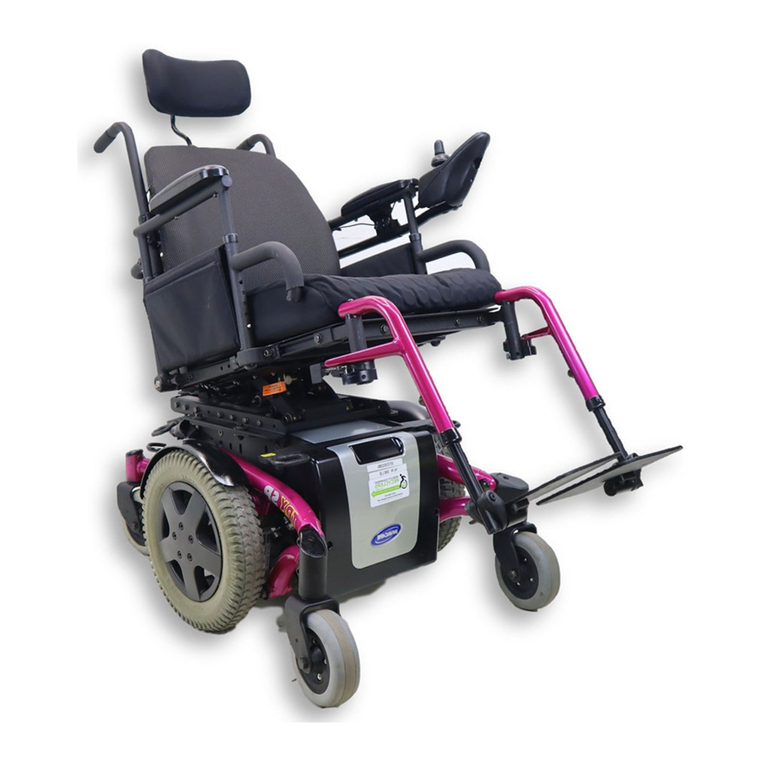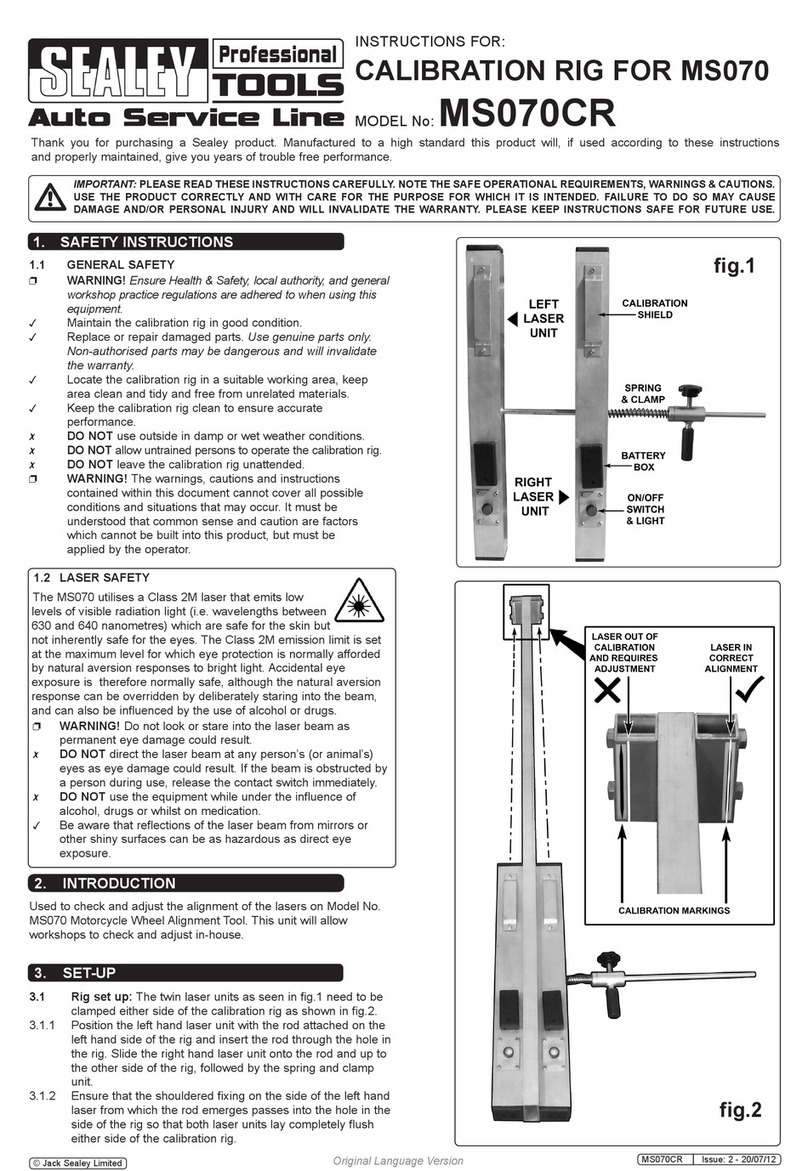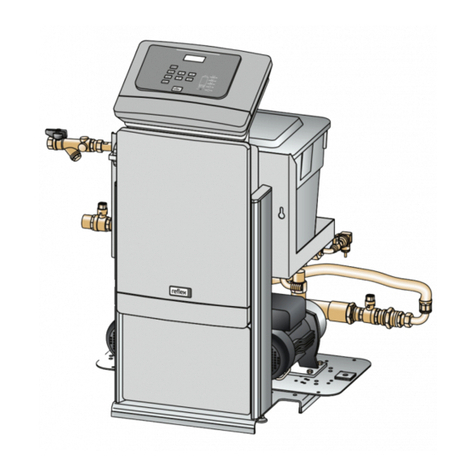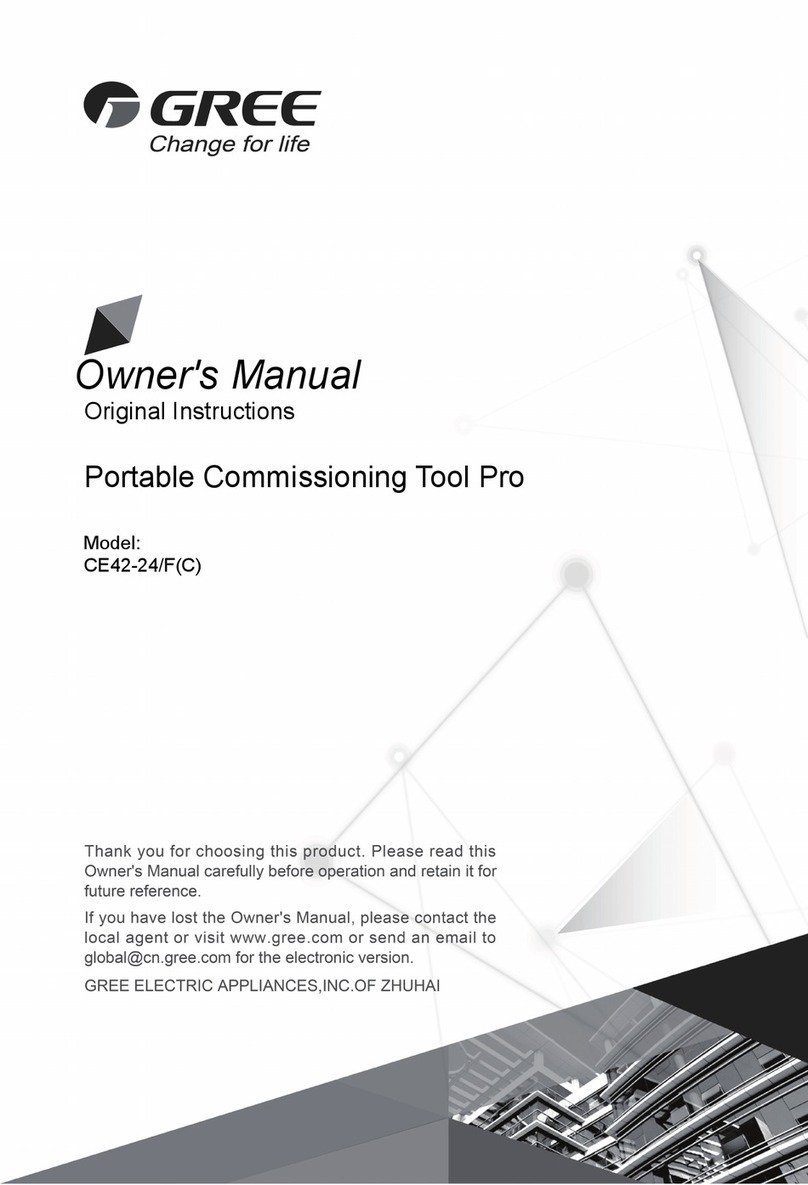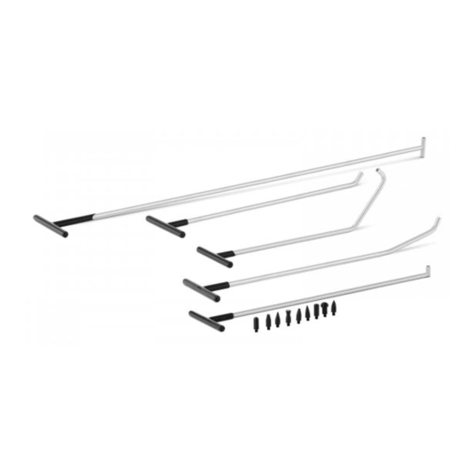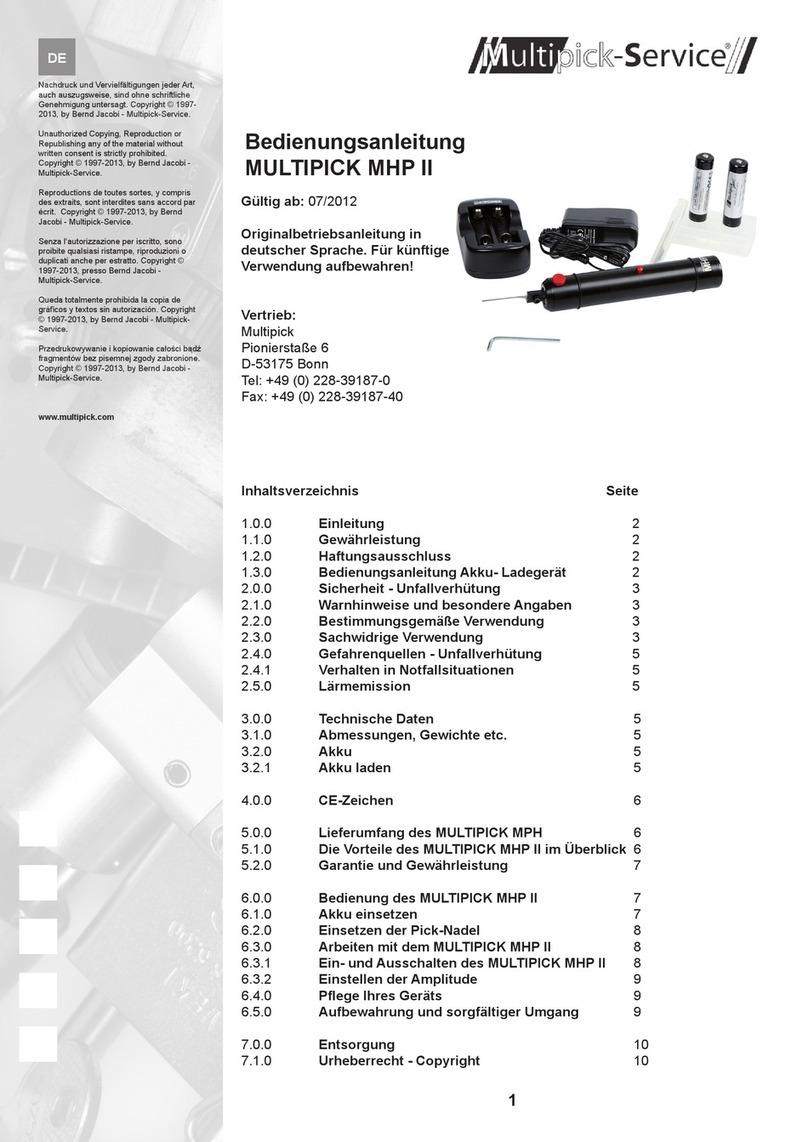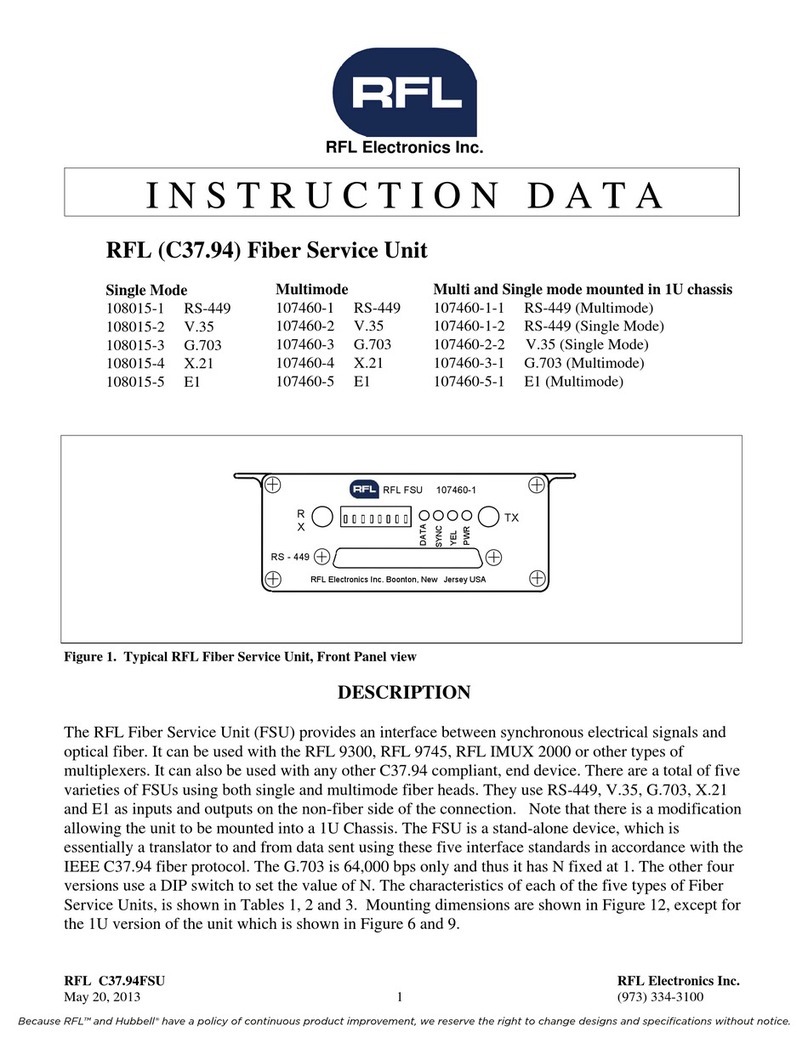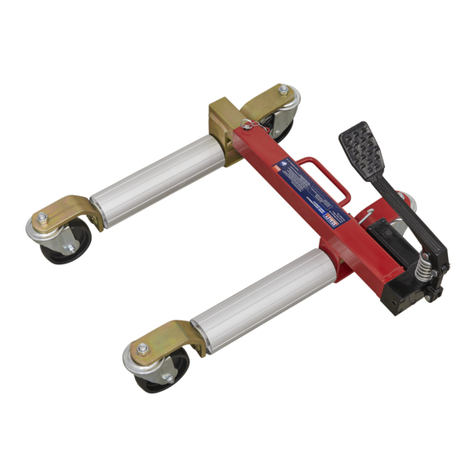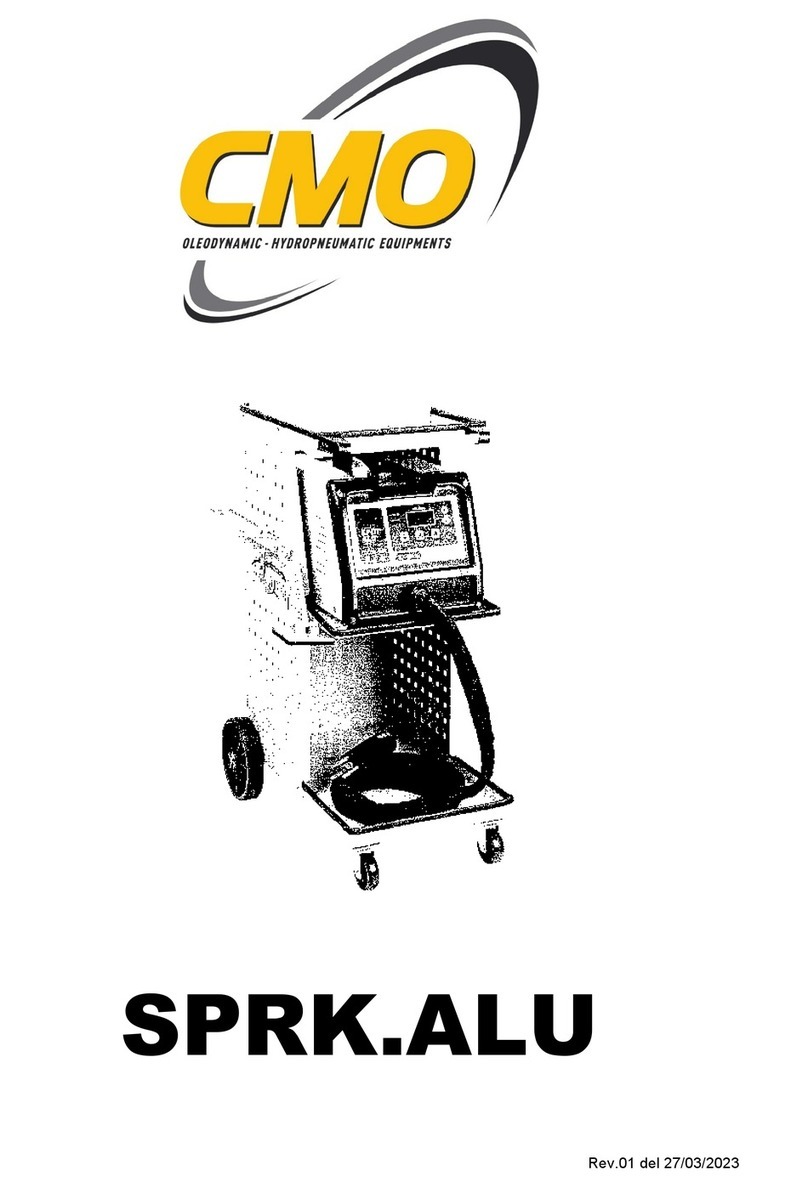
en
|ACX380/480
Contents
1
General instructions ....................................... 3
1.1
General notes .......................................... 3
1.2
General instructions ................................ 3
1.3
Manufacturer identification...................... 3
1.4
Environmental precautions ...................... 3
2
Safety conditions ........................................... 3
2.1
ersonal safety information ..................... 3
2.1.1
Definitions ......................................................... 3
2.1.2
ersonal safety information .............................. 3
2.2
Important information on service
equipment safety .................................................... 5
2.3
Safety devices ......................................... 5
3
Layout of the manual ...................................... 5
3.1
Use of the manual ................................... 5
3.2
Symbols................................................... 6
3.2.1
Safety ............................................................... 6
3.3
Glossary .................................................. 6
3.4
Guidelines for the handling of refrigerant 6
3.4.1
recautions for refrigerant storage ................... 6
3.4.2
Conditions of refrigerant and system ............... 7
3.4.3
Recycling capacity ........................................... 7
4
roduct description ........................................ 7
4.1
Application .............................................. 7
4.2
Scope of delivery ..................................... 7
4.3
Description of the unit ............................. 7
4.4
User interface .......................................... 8
4.4.1
Main menu ........................................................ 9
4.5
E³ CONNECT quick couplers .................. 9
5
Technical features ........................................ 10
6
Installation.................................................... 11
6.1
Equipment installation ........................... 11
6.1.1
Unpacking ...................................................... 11
7
Commissioning............................................. 11
7.1
Connections .......................................... 11
7.1.1
ositioning and connection ............................ 11
7.2
Software update .................................... 12
7.3
Initial verification .................................... 12
7.4
New AG and OE oil bottles filling ...... 12
7.5
UV dye bottle filling ............................... 13
8
Setup ........................................................... 14
9
Service Menu
............................................ 15
9.1
Manual activations and analogue channel
view
............................................................... 15
9.2
ressures calibration (service kit)
.............. 15
9.3
OOB ressures calibration (service kit)
...... 16
9.4
Gas weight calibration
.............................. 16
9.5
Calibration check
..................................... 17
9.6
Oil weight calibration
................................ 17
9.7
Compressor and vacuum pump test
......... 17
9.8
Spare parts & consumables
...................... 17
10
Equipment
and simulator ........................... 17
11
Refrigerant fluid circuit
............................ 17
11.1
Refrigerant fluid circuit
............................. 17
11.2
Operational cycles
................................... 18
11.3
Receiving tank (refrigerant cylinder)
.......... 18
11.4
Manifold charts
....................................... 18
11.5
NITROGEN
TEST and FORMING GAS
LEAK TEST - MANIFOLD ..................................... 20
11.6
Suction circuit components
...................... 21
12
Non
-permanent junction .............................. 21
13
Electrical connections
............................. 21
14
Maintenance
............................................. 22
14.1
Maintenance interval
............................... 22
14.2
Hoses
emptying ..................................... 23
14.3
Air
purge ................................................ 23
14.4
Vessel
filling ........................................... 23
14.5
ressures
zero ....................................... 23
14.6
Self
leak test .......................................... 23
14.7
E³
UM
................................................ 23
14.8
ump
oil change .................................... 24
14.9
Dryer
filter change ................................. 24
14.10
Replacement
of Active Oil rotection
Cartridge .............................................................. 25
14.11
Calibration
check ................................... 25
14.12
Maintenance
of printer ........................... 25
14.13
eriodic
checks ..................................... 26
14.14
Refrigerant
type change (only for ACX 380)
.............................................................. 27
14.15
Air purge
................................................. 27
14.16
Counters
................................................ 27
14.17
Replacing white sample filter (Refrigerant
identification unit
).................................................... 27
15
Replacement interventions ........................... 28
15.1
Extraordinary maintenance list
................. 28
15.2
Extraordinary maintenance
...................... 28
15.2.1
Replacement of component connected
to refrigerant circuit
....................................................... 28
15.2.2
Replacement
of logic electronic board with
display .................................................................... 29
15.2.3
Replacement
of electronic power board .. 29
16
Spare and wearing parts
.............................. 30
16.1
Refrigerant identification unit
.................... 30
A ENDIX 1 – REFRIGERANT FLUID CIRCUIT
ACX380/480 ....................................................... 31
A ENDIX 2 – REFRIGERANT FLUID CIRCUIT
ACX380/480 O ERATIONAL CYCLES
............ 32
A ENDIX 3 – ACX380/480 - ELECTRICAL
CONNECTION – LOGIC ELECTRONIC BOARD
........................................................................... 36
A ENDIX 4 – ACX380/480 - ELECTRICAL
CONNECTION – OWER ELECTRONIC
BOARD AND OWER SU LY
....................... 37
A ENDIX 5 – ACX380/480 - ELECTRICAL
CONNECTION – STATUS AND WARNING
INDICATOR LIGHT ELECTRONIC BOARD ........ 39
A ENDIX 6 – TROUBLE SHOOTING .......................... 40
A ENDIX 7 – FAILURE LIST ACX380/480 .................. 41
